Keith Jarrett’s improvisional style in solo concerts
Browse in the Library:
| Artist or Composer / Score name | Cover | List of Contents |
|---|---|---|
| William Best I Love You For Sentimental Reasons (Jazz Standard) | William Best I Love You For Sentimental Reasons (Jazz Standard) | |
| William Eveleth – Blues Jazz and Rock Riffs For Keyboards |
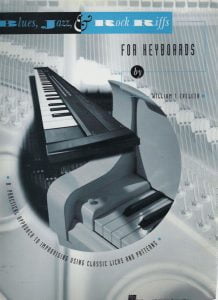 |
|
| William Gillock In Old Vienna Musescore File.mscz | ||
| William Gillock Valse Etude In Romantic Style Musescore File.mscz | ||
| William Joseph – Within (Songbook) (William Joseph) |
 |
William Joseph – Within (Songbook) (William Joseph) |
| William Robinson – My Girl | ||
| William Russo Composing Music A New Approach (ebook) |
 |
|
| Willie Dixon Preacher Of The Blues (2011) Mitsutoshi Inaba (Book) Biography |
 |
|
| Willie Fugal S Blues Piano transcription |
 |
|
| Willie Nelson – Always on My Mind Sheet Music |
 |
|
| Willie Nelson – On My Mind | ||
| Willie The Lion Smith – Finger Buster transcription |
 |
|
| Willie The Lion Smith Echo of Spring transcription |
 |
|
| Willow Weep For Me Words And Music By Ann Ronell 1932 Jazz Standard (Vintage sheet music) |
 |
|
| Wim Mertens – American Minimal Music La Monte Young Terry Riley Steve Reich Philip Glass |
 |
Book La Monte Young Terry Riley Steve Reich Philip Glass |
| Wim Mertens – Close Cover | Wim Mertens – Close Cover | |
| Wim Mertens – Struggle For Pleasure | Wim Mertens – Struggle For Pleasure | |
| Wim Mertens – Time Passing |
 |
|
| Wim Mertens Humility |
 |
|
| Wim Mertens Lir |
 |
|
| Windham Hill piano sampler |
 |
Windham Hill piano sampler |
| Windy Whistle (Le Renard et l’Enfant OST) Alice Lewis | ||
| Wings (McCartney) – Greatest Hits |
 |
Wings sheet music |
| Winifred Atwell Album Of Rags No 1 Original arrangements Vintage songbook |
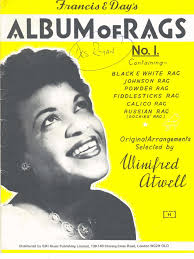 |
Winifred Atwell Album Of Rags No 1 Original arrangements Vintage songbook |
| Winifred Atwell Marguerite Monnot The Poor People Of Paris ( La Goualante Du Pauvre Jean) Piano Solo |
 |
|
| Winnie The Pooh The Honey Tree Sheet Music (Disney) |
 |
Winnie The Pooh The Honey Tree Sheet Music (Disney) |
| Winter Sonata O.S.T. (Ryu) | ||
| Winter Wonderland Other Christmas Favorites Songbook Piano Vocal guitar Chords |
 |
Winter Wonderland and Other Christmas Favorites Songbook Piano Vocal guitar Chords |
| Wish You Were Here – Pink Floyd (Musescore File).mscz | ||
| Within Temptation – Our Solemn Hour | ||
| Without you (Maria Carey) | ||
| Without You (Mariah Carey Piano Arr ) (Musescore File).mscz | ||
| Wiz Khalifa & Charlie Puth See You Again (Solo Piano) |
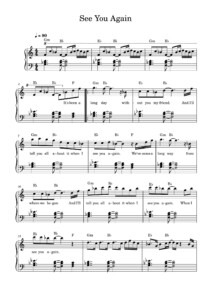 |
|
| Wolf Wagner Paraphrase Über Die Walküre |
 |
|
| Wolfe Richard Legit Professional Fake Book More Than 1010 Songs |
 |
Wolfe Richard Legit Professional Fake Book More Than 1010 Songs |
| Wolfenzon – Stücke für Klavier | Wolfenzon – Stücke für Klavier | |
| Womack, Bobby – Midnight Mover My Autobiography The True Story of the Greatest Soul Singer in the World (Book) |
 |
|
| Woman in love (Barbra Streisand) | ||
| Women Of Pop Rock Songbook Twenty-Two Hot Hits for Easy Piano |
 |
Women Of Pop Rock Songbook Twenty-Two Hot Hits for Easy Piano |
| Wonderful Christmastime -Paul Mccartney (Wings) (Musescore File).mscz | ||
| Wonderful Life – Black (Easy Piano Solo Sheet Music) (Musescore File).mscz | ||
| Woody Allen – A propósito de nada (autobiografía)(2020) |
 |
|
| Woody Allen – Apropos of Nothing (2020) Autobiography | Woody Allen – Apropos of Nothing-Simon and Schuster (2020) Cover | |
| Woody Guthrie This Land Is Your Land (Easy and Intermediate Piano Solo) |
 |
|
| World Hits Of Jazz Standard |
 |
World Hits Of Jazz Standard |
| Wuthering Heights (Ryuichi Sakamoto) | ||
| Wynton Kelly – Autumn Leaves Solo transcription | Wynton Kelly – Autumn Leaves Solo transcription | |
| Wynton Kelly – Dark Eyes Solo Piano transcription |
 |
|
| Wynton Kelly – Dark Eyes Solo Piano Transcription (Musescore File).mscz | ||
| Wynton Kelly – Full transcriptions | Wynton Kelly – Full transcriptions | |
| Wynton Kelly – I Dig of You Solo transcription |
 |
|
| Wynton Kelly – If I should Love You Solo transcription |
 |
|
| Wynton Kelly – Jazz Piano Collection |
 |
Wynton Kelly Piano Collection- |
| Wynton Kelly – Someday my prince will come (Piano solo) |
 |
|
| Wynton Marsalis Trumpet Genius Gourse, Leslie (Book) |
 |
|
| Wynton Marsalis – Caravan (Solo) |
 |
|
| Wynton Marsalis – Darn That Dream (Solo) | Wynton Marsalis – Darn That Dream (Solo) | |
| Wynton Marsalis – Dealfayos Dillema (Solo) |
 |
|
| Wynton Marsalis – Standards (sheet music transcriptions) |
 |
Wynton Marsales – Standards (sheet music transcriptions) |
| Wynton Marsalis In The Court Of King Oliver (Trumpet and rhythm section) |
 |
|
| Wynton Marsalis Omnibook For B Flat Instruments Transcribed exactly from his recorded solos |
 |
Wynton Marsalis Omnibook For B Flat Instruments Transcribed exactly from his recorded solos |
| Wynton Marsalis Struttin’ With Some Barbeque (Live) Wynton Marsalis’ Trumpet Solo |
 |
|
| Xenoblade Chronicles 2 Loneliness Kenji Hiramatsu | Xenoblade Chronicles Opening Theme Game sheet music | |
| Xenoblade Chronicles Opening Theme Game sheet music Yoko Shimomura |
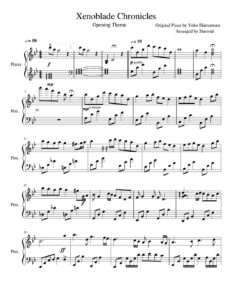 |
|
| Yamaha E443 Songbook digital keyboard PSR-E443 |
 |
|
| Yamaha Keyboard Songbook |
 |
Yamaha Keyboard Songbook |
| Yamaha Keyboard Songbook Song-Buch |
 |
|
| Yamaha PSR E373 YPT-370 PSR-EW310 Song book |
 |
|
| Yamaha Song Book |
 |
Yamaha Song Book |
| Yamaha Song book |
 |
Yamaha Songbook |
| Yamaha Songbook |
 |
Yamaha-Songbook |
| Yamaha songbook 50 Piano Greats for the piano (Yamaha collection) |
 |
50 Piano Greats for the piano (Yamaha collection) |
| Yamaha Songbook Contemporary Vol. 1 |
 |
Yamaha Songbook Contemporary Vol. 1 |
| Yana Bobalik Mysterious Music Я.Бобалік Songbook |
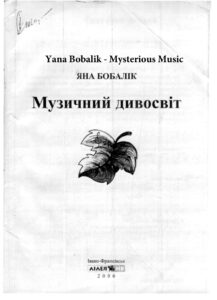 |
|
| Yana Bobalik Secret Music From Mysterious Music Я.Бобалік Таемна Музыка |
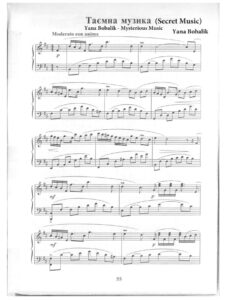 |
|
| Yann Tiersen Rue des Cascades (sheet music) | yann tiersen cascades sheet-music | |
| Yann Tiersen Mother’s Journey |
 |
|
| Yann Tiersen – Tabarly Sheet Music |
 |
|
| Yann Tiersen – Comptine Dun Autre ete | ||
| Yann Tiersen – La Dispute – Amelie Poulain | ||
| Yann Tiersen – La Valse d’Amelie Poulain | Yann Tiersen – La Valse Damelie | |
| Yann Tiersen – Le moulin – Amelie Poulain | Le Moulin – Amelie Poulain | |
| Yann Tiersen – Six pièces pour piano – Volume 2 – Amélie Poulain |
 |
Yann Tiersen – Six pieces pour piano – Volume 2 – Music Sheet |
| Yann Tiersen – Summer 78 | ||
| Yann Tiersen – Sur Le Fil |
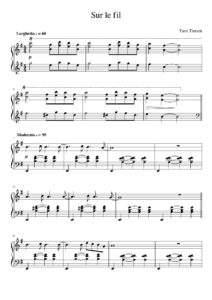 |
|
| Yann Tiersen – Pièces pour piano vol 1 et 2 + divers |
 |
Yann Tiersen – pièces pour piano vol 1 et 2 + divers  |
| Yann Tiersen Eusa 2015 Songbook |
 |
|
| Yann Tiersen J’Y Suis Jamais Alle piano solo (Amélie) |
 |
|
| Yann Tiersen Onze Pièces Pour Piano |
 |
Yann Tiersen Onze Pièces Pour Piano |
| Yann Tiersen Partitions intégrales Piano Works 1993-2004 | Yann Tiersen Partitions intégrales Piano Works 1993-2004 | |
| Yann Tiersen Tabarly Complete Book For Piano |
 |
|
| Yanni In My Time (Piano Solos) Sheet Music |
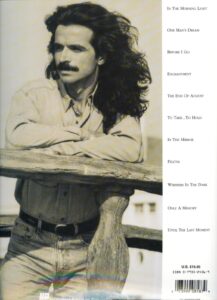 |
Yanni In my time piano solos |
| Yanni One Man’s Dream |
 |
|
| Yanni – Per Piano (Piano book) |
 |
Yanni – Per Piano |
| Yanni – In The Morning Light | ||
| Yanni – Nostalgia | ||
| Yanni – One Man’s Dream (Musescore File).mscz | ||
| Yanni -The Best of |
 |
 |
| Yanni Ethnicity Book |
 |
Yanni Ethnicity Book |
| Yaron Herman – Hallelujah (Leonard Cohen) transcription |
 |
|
| Yashal (Elisa) | ||
| Yasuharu Takanashi – Naruto Shippuden OST – Loneliness |
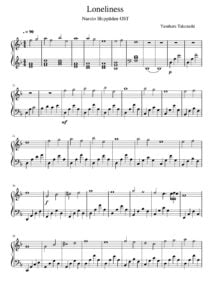 |
|
| Yedidia, Ronn Piano Sonata No 3 outcries (manuscrit) |
 |
|
| Yehezkel Raz Ballerina Piano Solo sheet music |
 |
|
| YES Fragile |
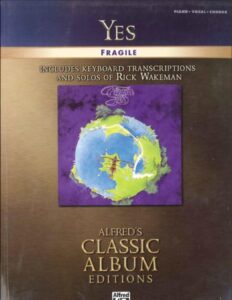 |
YES Fragile |
| YES – Complete Deluxe Edition |
 |
YES – Complete Deluxe Edition |
| Yes Close To The Edge The Story Of Yes (Book) |
 |
|
| Yes The Best Of Guitar Songbook with TABs |
 |
Yes The Best Of Guitar Songbook |
| Yesterday Piano Cello – Piano Sheet Music – Paul McCartney |
 |
|
| Yesterday Piano vocal guitar Songbook Featuring Music From the OST |
 |
|
| Yesterday The Beatles For Jazz Piano (Musescore File).mscz | ||
| Yesterday when I was young (Charles Aznavour) | ||
| Yimkin Law ( Et maintenant on va où OST) Racha Rizk | ||
| Yiruma – 27 May | ||
| Yiruma – Destiny Of Love | ||
| Yiruma – Dream | ||
| Yiruma – Dream A Little Dream Of Me | Yiruma – Dream A Little Dream Of Me | |
| Yiruma – Falling | ||
| Yiruma – First Love – River Flows In You | Yiruma – First Love – River Flows In You | |
| Yiruma – Gabriel |
You can’t keep things totally naked and totally free without there becoming some sort of method. I think if you talk to free players they’ll often try to justify their oeuvre over the years, if it’s all free, with some sort of methodology, and I’m not sure that that’s possible if it’s free. . . . But if you do it too often, [and] I can attest to this from solo concerts, architectures build themselves up over time, and they’re harder and harder to work around, and my challenge in solo concerts was . . . not to come up with good music I had come up with before.
Keith Jarrett, interview by Alyn Shipton, BBC Radio 3, broadcast April 30, 2005, as part of a Jazz File series of programs on Keith Jarrett.
In many of the contexts in which improvisation is practiced, it can be said—to borrow a phrase from Nicholas Cook—to be ‘‘relational.’’ Jazz musicians often talk of improvising ‘‘on’’ or ‘‘over’’ the form of a piece or ‘‘the changes,’’ and thus conceive of the act of improvisation in relation to pre-determined structures.
This point holds true most especially for jazz which is dependent on song or blues forms, and there have been many analytical studies of improvisation as practiced in relation to such forms. But there is a substantial amount of music in the jazz tradition in which improvisation is not so strictly determined in relation to song structures and chord sequences.
Such music ranges from the work of musicians associated with the free jazz movement (Ornette Coleman, Albert Ayler, and Cecil Taylor, for example), to other slightly more contemporary examples (Anthony Braxton or John Zorn, for instance). In such contexts, it is not that there is an absence of compositional organization, but rather that improvisation is conceived to be less determined by traditional formal structures than in what might be called the conventional bebop model.

In this article, we’ll explore one such non-conventional context, pianist Keith Jarrett’s solo improvised concerts. While Jarrett himself has claimed that his improvisations avoid any structural planning, we examine a sense in which they employ certain stylistic models, or simply ‘‘styles.’’
This is not to suggest that there is anything pre-planned in these performances, but rather that the ‘‘architectures’’ which Jarrett talks of in the epigraph quotation above may come to function similarly to compositional organization. More specifically, Jarrett’s varied employments of ‘‘styles’’ provide parameters within which improvisation can be practiced.
Best Sheet Music download from our Library.
These architectures consist not only of a number of different styles, but also a large-scale progression through a sequence of particular styles, a device that also has important expressive implications. The epigraph comments by Jarrett also point to another aspect of improvisation in this context, which is a tension that exists between the natural tendency for repetition and the idea of improvisation as the province of the ‘‘unique.’’
Improvisation is concerned with creation at the moment, and so improvisations are regarded as singular products of their moment of creation. Jarrett articulates a desire to avoid the architectures of which he talks, but he also acknowledges the power they can come to hold for the improviser. This suggests that improvisers may employ strategies which
attempt to counteract these tendencies towards repetition.
This interpretation is suggested by John Corbett, who views the idea of risk as an inherent condition in free improvisation, suggesting that improvisers play in order to ‘‘risk the unknown.’’
While we’ll explore some architectural devices of Jarrett’s solo impros, we’ll also examine an instance which might be understood as an attempt to work against those structures, perhaps testifying to this aesthetic of risk.
Keith Jarrett began performing solo piano concerts in 1972. Many commentators have seen this venture as representing the adoption of an epic perspective into jazz. This reading can be seen, for instance, in the writings of TedGioia, who characterized Jarrett’s solo piano concerts as ‘‘titanic improvisations.’’ Similarly, Frank Tirro thought these performances were emblematic of a ‘‘grandiose dimension’’ in jazz. Jarrett was certainly
not the only musician pursuing such a course. As Gernot Blume has discussed, Anthony Braxton had released a number of solo saxophone recordings by 1972, and pianist Cecil Taylor had even begun performing solo concerts in the late 1960s.
In addition, over the space of a year between 1971 and 1972, the German ECM label recorded albums of solo piano music by Jarrett, Paul Bley, and Chick Corea. The result of Jarrett’s session, Facing You, has often been described as a kind of blueprint for the solo concerts. If the scale of Jarrett’s concerts—in which he would improvise an entire performance of solo piano music—seemed to tend towards the epic, the German ECM label’s releases of recordings of these performances signalled a correspondingly weighty undertaking.
The first release, Solo Concerts (1973), was spaced across three LPs, while the ten LPs of the Sun Bear Concerts (1976) provoked charges of egotism in some quarters.

Keith Jarret’s sheet music download here.
In terms of his artistic aesthetics, Jarrett’s solo concerts were intimately linked to many contemporary avant-garde performance ideals. The ‘‘new thing’’ associated with musicians like John Coltrane, Albert Ayler, and Ornette Coleman during the 1960s, was a philosophy as much as a musical style. The religious ideals which Coltrane and many other musicians espoused drew their roots not only from a rekindling of the sense of black identity which was an integral part of 1960s black politics, but also from the ideals of the counterculture.
This upsurge in religious rhetoric had essential ties to music making. The result of the connection musicians made between spiritual ideals and music resulted in a conceptualization of performance as a spiritual quest. One of the most famous models of this concept is found articulated through John Coltrane’s seminal 1964 recording, A Love Supreme.
The way in which Jarrett articulated his aesthetic stance in the liner notes to the first recorded solo concert releases from 1973 establishes a direct connection to this ideology: ‘‘I don’t believe that I can create, but that I can be a channel for the Creative. We do believe in the Creator, and so in reality this is His album through me to you, with as little in between as possible on this media-conscious earth.’’
While couched in terms typical of those used by many jazz musicians of the time, this creative philosophy has in Jarrett’s case found a very particular dramatic manifestation in the solo concerts. At these events, Jarrett often lectured audiences on the risks involved in this creative endeavor, the result of which contributed much to the dramatic spectacle of these performances.
The extended scale of the solo performances is directly related to this creative aesthetic, especially through the manner in which the process of improvisation is itself foregrounded in the performances. In Jarrett’s case, the idea of extended form is a consequence of predicating the entire musical ethos of such performances on the unhindered obeyance of the improvisatory process.
That is to say, the solo concerts extend the kinds of ideals of self-actualization and spiritual quest present in free jazz, while making such extended performances a virtue through which the very process of creation takes center stage. It is from this particular perspective that we want to consider Jarrett’s solo piano improvisations, a context in which the whole cultural import of improvisation comes to take center stage.
Styles in the Solo Concerts
Not so long ago, pianists used to fit comfortably into bags. You either played funk or you played free, right-handed ‘‘trumpet’’ style or locked-hand block chords. Keith Jarrett does all these things.
Bob Palmer, Rolling Stone, 197217
As the above assessment of Keith Jarrett’s 1972 solo piano album, Facing You, suggests, when Jarrett emerged as a major voice on the jazz scene towards the end of the 1960s, his individuality was perceived to stem from the manner in which his voice incorporated many diverse facets of the jazz vocabulary. This notion of Jarrett as the musician who speaks in different musical dialects has emerged as one of the most important themes in writings on the pianist.
A prime example can be seen in the work of the musicologist Gernot Blume, who describes Jarrett as a musician who ‘‘traverses a wide musical terrain in pursuit of a variety of styles, traditions and forms of expression.’’ Nowhere is this theme more prominent in both critical and scholarly writings on Jarrett than in relation to the solo concerts. David Ake’s recent discussion of Jarrett serves as a good illustration.
In his 2002 book, Jazz Cultures, Ake talks of the ‘‘distinct categories’’ which can be heard in the solo concerts, including ‘‘a seamless blend of quasi-Romantic rhapsodies, diatonic folk-like passages, ‘free’ counterpoint, angular atonality, extended techniques (plucking or strumming the piano strings, striking the frame, etc.), and protracted ostinatos.’’
This kind of description of Jarrett’s performances extends throughout reviews of the solo concerts. For example, in 1982, the critic John Fordham noted that Jarrett’s ‘‘favorite devices are rolling gospelly figures over which the right-hand swerves and wreathes, harp-like slow pieces, baroque semi-classical interludes and—on this occasion—such a trancelike
flight into soul music that you felt he was about to ascend into the tastefully stripped pine roof of the hall.’’20 Similarly, in 1977, the critic Richard Williams claimed that Jarrett was ‘‘the most consonant of players and his unbroken episodic ramblings consist in the main of extemporised ballad melodies which flirt with preciousness, hard-hammered sequences derived from black church music (rhythmically vivacious but harmonically tedious).’’
While the sheer diversity of the reference points cited here is inevitably of interest, what is of particular note is the way in which the language used imbues the styles mentioned with a structural significance. There are ‘‘pieces’’ and ‘‘interludes,’’ terms that have a structural significance. These writers clearly hear styles as instantiated in identifiable passages of music, which form constituent parts of the improvisations.
Jarrett’s improvisations appear to inhabit a musical world which can be mapped out in terms of specific stylistic reference points. Gernot Blume’s view of this aspect of Jarrett’s music is worth quoting here, since it identifies the sense in which Jarrett’s improvisations seem to listeners to invoke convention:
Jarrett recreates a set of repeatable procedures and formulaic practices that reinstate the effects of idiomatic delineations. He has to create a style out of his mélange of styles to communicate to his audiences within an identifiable conceptual framework. Such a framework of conventions instills in the listener a feeling of familiarity with Jarrett’s music, an element of recognition and understanding of his structural devices and artistic prerogatives. (Blume, Musical Practices, 114–15)
Understanding Jarrett’s improvisations seems to necessitate understanding the conventions and styles which Blume refers to, essentially identifying a series of reference points from which to map out the territory within which Jarrett operates.
In many ways, this is a surprisingly traditional approach. In fact, it is little different from Leonard Ratner’s theory of musical topics in the Viennese Classical tradition. Harold Powers has described this concept of musical topics in the following manner:
Each topic either implies or characterizes a recognizable feature of music from a particular social context. The topics are terminological tags naming kinds and manners of music familiar to a particular society of musical consumers. They are the verbal equivalents for items in a musical vocabulary.
Harold Powers, ‘‘ReadingMozart’s Music: Text and Topic, Syntax and Sense,’’ Current Musicology 57 (Spring 1995), 5–44.)
From this perspective, those descriptions of Jarrett’s playing make absolute sense; they identify commonly understood elements in Jarrett’s musical language and label them in stylistic terms, much as the topics which Ratner found in the music of Mozart and Haydn. Just as the ‘‘manners’’ of music that Ratner identified formed constituent parts of a compositional language, so Jarrett’s styles are constituent parts of the language which he brings to these improvisations. Topical theory also points out that these topics, or styles, can prove to be the very things through which music means— or, rather, the nuts and bolts of an expressive language.
Jarrett’s improvisations have meaning because so much of his music is heard as a reference to other musics. Two qualifications are necessary at this point before proceeding any further. First, the styles we want to consider reflect my work on a specific period of Jarrett’s recordings, namely those made in 1973 and released on the LP Solo Concerts. It is unrealistic to imagine that Jarrett’s playing would not have developed over a number of years, but we do not examine these developments in this limited article. Second, it is not my intention to attempt an exhaustive classification of Jarrett’s improvisations into a series of different styles.
Part of the reason we adopt the term ‘‘style’’ rather than ‘‘topic’’ has to do with how such classes can be identified in a piece of music. Much of the application of topical theory to music of the eighteenth century has been able to specify very clear-cut divisions between the presentation of different topics. However, in Jarrett’s music this is simply not the case, as will become clear in the following discussion where we identify and explore three particular styles.
Ballad Style
The term ‘‘ballad’’ has a very distinct meaning in jazz aside from its connotations in terms of other musical traditions. The New Grove Dictionary of Jazz describes a ballad as ‘‘a slow sentimental lovesong . . . [T]hey are performed at a relaxed tempo, in a soft intimate style, and lack the rhythmic drive and intensity of four-beat jazz. The word is often used, loosely, of any slow piece, regardless of its form, style, or subject matter.’’
(Robert Witmer, ‘‘Ballad,’’ in The New Grove Dictionary of Jazz, ed. Barry Kernfeld (London: Macmillan Press, 1988; reprint, New York: St. Martin, 1995), 55–56.)
As this definition suggests, jazz musicians generally take a rather different approach to a ballad than to an up-tempo piece. By definition, ballads lack the propulsive swing feel of a faster tune. At the same time, melodicism also plays a particularly important role. Many jazz musicians additionally place an emphasis on empathizing with the sentiment of the lyrics of the original song when playing a ballad.
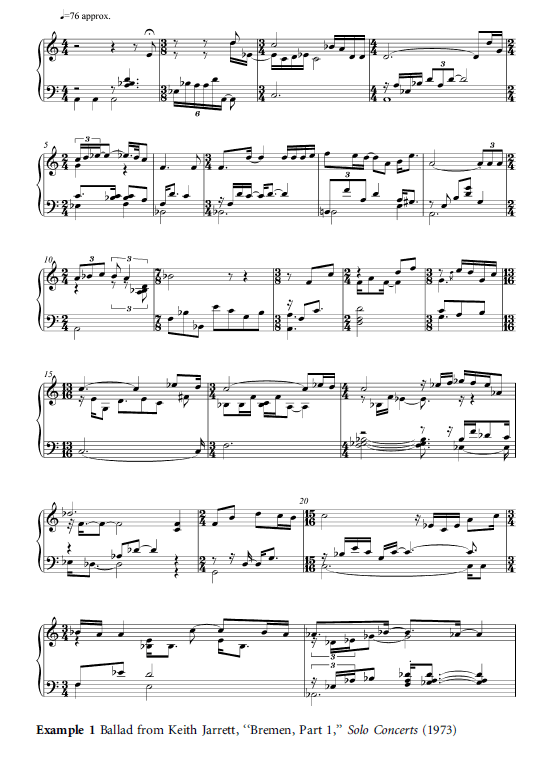
The musical extract in Example 1 comes from the opening of the 1973 Bremen concert, as released on Jarrett’s Solo Concerts album.
One of the most immediately distinctive features of a Jarrett ballad is seen in the piano figuration, in which the melodic line in the right-hand part is supported by broken-chord and arpeggiated figures in the left. The left-hand figures never settle into one particular figurative pattern, but instead shift between a number of different types of formations.
A Jarrett ballad also has a distinct rhythmic approach, drawing in part on the kind of rhythmic license granted to musicians playing a ballad in a group context, or perhaps the sort of approach a pianist would take in improvising a solo introduction. Ballad passages are full of rubato playing, whereby the length of the beat expands and contracts to create a subtle sense of ebb and flow. Rubato is not employed to give particular poignancy to phrase endings or cadential points, but rather permeates the
entire passage.
This sense of flexible time also applies to the harmonic motion in this case. In performances of a jazz standard with a rhythm section, the chord changes generally move at a regular rate, usually in measures or half-measures. In a Jarrett solo ballad though, the rate of change varies subtly; there is a continual expansion and contraction of the period between each change in Example 1, resulting in a fluid harmonic rhythm.
A ballad also inhabits a very particular kind of world, one that is distinguished by largely familiar and conventional types of short-term harmonic progressions. There are many ii-V or ii-V-I patterns, harmonic building blocks, which are a formative part of the jazz language. On a larger scale, Jarrett’s ballad passages avoid establishing a tonal center, always breaking off to move in a new direction as soon as any cadential
inference might be drawn.
In Example 1, for instance, the opening A minor chord (with a phrygian inflection—a distinctive Jarrett trait) functions as the starting point for a series of harmonic excursions, which foray ever further away from the point of departure.
Thus, the first segment moves through a ii-V-I progression to B-flat at bar 6, and then back onto A minor at bars 8-9. The following passage moves further afield, through C major, and then a sequence of descending progressions lead through flat keys (E-flat and D-flat) onto C, and then quite suddenly onto A-flat. While this opening A minor chord serves an important function as a launching point for these harmonic excursions, it never acts as a tonic key in a functional sense.
It is evident from Jarrett’s solo concert recordings that ballad passages seem to play a particular role at the opening of improvisations, and this also has expressive implications. Given what we have called the foregrounding of improvisation at the heart of the spectacle of the solo concerts, ballad passages seem to represent the opening of an improvisation in a very specific way.
These harmonic excursions we have referred to, and the particular way in which a ballad circles around certain diatonic areas while abstaining from establishing a tonic, are all musical features which performative enact the process of improvisation. As listeners, we are drawn to hear such musical features as indicative of the creative process; the gradual unfolding of a
ballad represents, for example, an improviser gradually constructing a musical world in which to work. The key term here is ‘‘representation.’’
We are not trying to suggest in any literal phenomenological sense that we can gain access to the process of improvisation through the music, but rather that we hear a certain representation of that process in the music.
Folk Ballad Style While we located the Jarrett ballad style in terms of certain precedents in the jazz tradition, the style that we term a ‘‘folk ballad’’ indicates the extent to which the musical language of the solo concerts extends its generic reference points rather wider. With a folk ballad passage, there is a certain convergence between Jarrett’s language and the genre of folk-rock prevalent during the 1960s, as exemplified particularly by the music of Bob Dylan.
As Gernot Blume has discussed, the nature of this influence is nowhere clearer than on Jarrett’s 1968 album Restoration Ruin, which was an attempt (although a rather unsuccessful one) to present his multi-instrumental talents in a context much closer to that of singer/songwriter than jazz musician.
As Blume points out, in this process, Jarrett has notably absorbed
influences from specific music styles into his own voice. Folk ballad episodes are characterized by a particular kind of piano figuration,
consisting generally of arpeggio-like, broken-chord patterns in the left hand, usually employing roots, fifths, and sometimes tenths as well. This kind of left-hand pattern is very much redolent of piano figuration from the classical repertoire, but equally it can be heard as analogous to a guitarist’s arpeggiated chordal strumming.
Unlike a ballad, this type of figuration is coupled to a steady pulse, resulting in a feel of straight eighth notes. Folk ballad passages take a very different harmonic approach from Jarrett’s ballad passages, employing diatonic triads free from the extensions and alterations typical of ballad style. Example 2 shows the opening of a folk ballad episode from the Lausanne concert, with the establishment of left-hand figuration coupled to a sequential harmonic motion: B-flat major – C major – D minor – C major.
This particular harmonic pattern is one which occurs again and again in the solo concerts, with the distinctive trait being a sequential move from a major chord to the minor chord a third above, or vice versa. Also, typical for a folk ballad passage is that while B-flat is established as the ‘‘home’’ chord, the modality is actually F major, something which becomes clearer later in the passage.
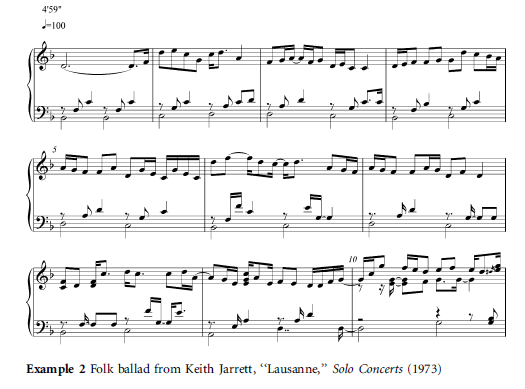
Much like a ballad passage, there is always a strong emphasis on melody in a folk ballad episode, but the sense of phrasing is quite different. The regularity of the underlying harmonic motion (in contrast to that in a ballad passage) is matched by a melodic approach which stresses working out a simple melodic idea. In this instance, bars 2 and 3 of the excerpt are played as two separate but neatly matched phrases, with the following two bars comprising an answering phrase doubled in length.
While later on in the passage, Jarrett spins the music off into harmonic and figurative patterns more expansive than this opening, the strong impression of order given by the establishment of this passage contrasts sharply to the ballad style.
In the context of the solo concert from which it comes, this particular folk ballad passage follows on from a ballad passage which has lasted some four minutes. By placing the folk ballad after this exploratory opening ballad passage, an expressive significance becomes clear. We have suggested that the ballad episodes that so typically open a Jarrett improvisation express a gradual unfolding, which in many ways mirrors our sense as listeners of the improvisatory process; the growth in confidence and increasing assurance with which musical risks are taken.
In his study of the late music of Beethoven, Robert Hatten suggests that topics in the classical tradition can articulate dramatic oppositions, and he focuses in particular on the idea of ‘‘expressive genre.’’ As he describes them, these genres are ‘‘based on . . . [and] move through, broad expressive states oppositionally defined as topics in the classical style.’’
In other words, expressive effect arises from the juxtaposition of topics, and the progression from one to another. The progression from ballad to folk ballad style is what might be called an expressive genre in Hatten’s terminology. It marks out a change in musical state, from what might loosely be described as unstable to stable.
This progression is one which is particularly characteristic of Jarrett’s solo concerts and seems to constitute a long-term strategy, whether borne of habit or careful planning.
Blues Vamp Style
Jarrett is well known for employing one particular type of stylistic passage in his solo concert performances: long vamp-driven sequences. Vamp passages have none of the more conventional harmonic or rhythmic progressions typically found in a Jarrett ballad. This vamp-based aspect of Jarrett’s conception is one which surfaces in a whole variety of musical contexts beyond the solo concerts, and his use of this texture extends from his time with Charles Lloyd towards the end of the 1960s, through
groups now known as the ‘‘American’’ and ‘‘European’’ bands, to his longstanding trio with Jack DeJohnette and Gary Peacock. Blues vamps are one particular subset of the wider category of ostinato passages as they occur in the solo concerts.
These passages are vamp-driven, while containing strong blues stylistics through dominant-seventh harmonies and other typical blues inflections (flattened third and fifth degrees, for instance). The other subtypes of ostinato passage tend towards either diatonic or other kinds of modal configurations, both types of which are also evidenced on these 1973 recordings.
We use the term ‘‘vamp’’ instead of ostinato for a particular reason. While there is generally some form of repeated figure used in these passages, Jarrett varies such figures extensively, and they can take a number of different forms while still retaining a recognizable identity. The vamps that Jarrett employs in these passages exemplify a particular aspect of his playing, namely the ability to generate a strong rhythmic momentum by creating a texture of sometimes three or more distinct voices.
In the instance shown in Example 3, the vamp consists of an F-C7 progression, moving every half bar, and this progression is retained throughout this passage. The lower right-hand part generally works within the pentatonic grouping C-D-E-G-A, while the left hand quickly develops a distinct rhythm which counterpoints the motion in the right hand. In passages such as this one, the rhythmic feel Jarrett employs is much closer to a straight feel than a triplet-based swing approach.

The criticism most commonly levelled at the vamp-based aspects of Jarrett’s playing hinges on a kind of stasis texture in which little seems to change. In a 1977 review, for example, Richard Williams remarked that Jarrett’s improvisations included ‘‘lengthy spells during which inspiration deserts him, and he merely toys with a simple vamp until a new idea arrives.’’
These kinds of criticisms center on absence, and primarily on an absence of harmonic development and rhythmic variety. As much as anything, Williams’s comments betray a rather antiquated and narrow aesthetic notion of music. What is explicit in Williams’s case is the idea that musical stasis equates in some way to a stasis in the creative process. The logical
conclusion of such an argument might seem to be that the rate of development of new ideas in an improvisation can be taken as a sure indicator of the level of inspiration at which the performer is operating.
This view is hardly an acceptable way of evaluating improvisation. As we’ll suggest, blues vamp passages in the solo concerts can be understood as expressive in a much richer sense than Williams’s comments might suggest.
The essential quality to these passages in the solo concerts is ‘‘groove.’’ We use the term groove here as indicative not only of a certain kind of musical phenomenon (repeated patterns rhythmically articulated in such a way as to create a strong forward momentum) but of a physical, bodily experience.
This physical attachment is easily seen by watching musicians playing almost any groove-based music, and by observing the wide variety of ways in which groove is expressed physically in the experience of music, whether through dancing or tapping of feet. Steven Feld talks of how ‘‘getting into the groove also describes a feelingful participation, a positive
physical and emotional attachment. . . . A groove is a comfortable place to be.’’
In her 1996 book, Saying Something: Jazz Improvisation and Interaction, Ingrid Monson talks of the emotional and interpersonal aspects of the way jazz musicians talk about groove. She draws specific attention to the idea that playing in the groove is almost like letting the music ‘‘play itself.’’
In his performances, Jarrett’s body tends to reinforce this idea of groove as physically-grounded, through motions which may articulate pulse (the tapping of feet, sometimes against the sustain pedal of the instrument) or may instead seem to represent the experience of the performer (standing up from the piano stool). In the latter case, these physical gestures can be
viewed as outward manifestations of interior states. We have discussed these aspects of Jarrett’s playing at length elsewhere, suggesting that they are crucial to the expressive effect of his music.
Understood in this sense, a vamp passage in Jarrett’s music may be static harmonically, and apparently show little of the onward momentum and
exploration of a ballad, but the groove enacts a physical engagement between improviser and music. Indeed, it specifically expresses a quality of exhilaration.
Conformity and Transgression: Hearing the Improvised
So far we have explored some patterns in Jarrett’s solo improvisations which may be akin to the architectures mentioned in the epigraph quotation at the outset of this article. One particular architecture is of concern here—that is, the progression of styles which forms an expressive genre in the sense we indicated earlier. This particular progression occurs in many of the solo concert recordings, although not always in quite the same form as in the Lausanne concert, which we’ll discuss here. In the first part of the Lausanne concert, this progression moves from a ballad passage at the outset, through a folk ballad episode (which we discussed briefly above in Example 2), and then into a blues vamp passage (my Example 3 above).
This is naturally a reductive kind of description, and certainly the musical trajectory is not quite as linear as this might imply. When expressive considerations are taken into account, this progression through styles represents a move from harmonic/rhythmic uncertainty towards the stability and affirmation of the groove.
The moment in this improvisation which particularly interests me lies just after the end of that progression; the move from the blues vamp into a more open rhapsodictype section. While a groove may be expressive of a kind of physically-grounded exhilaration, it also has clear musical boundaries. Harmonic and rhythmic stability creates expectations; it creates a very clear sense of what the normative is. Any musical element which does not fall within these normative boundaries will be highly
marked, and heard as somehow ‘‘outside.’’
For the improviser, this can mean that a groove such as this blues vamp may be hard to break out of, specifically because of the expectations that it creates. Does the improviser simply stop and abandon the groove, or does he attempt to gradually subvert or transform a part of the texture in order to effect a transition of sorts? For the listener, the presence of these boundaries may actually heighten the expectation of change after a time; they may come to speculate on the potential difficulty of effecting a move away from this area.
As shown in Example 4, at 99 390 (some two-plus minutes into the vamp passage), the left hand starts playing ascending scales in octaves, with the use of a little sustain pedal blurring the texture. While the vamp is based on F and C chords, this ascending line employs an F Lydian mode. The result is that the sharpened fourth degree (B natural) in this line clashes with the B-flats which sometimes appear in the vamp.
This ascending line also disrupts the vamp in rhythmic terms. The bass line has a kind of stuttering effect, created by the distance between each step changing between a dotted eighth note and a quarter note. The dotted eighth division is the more used of the two, while the right hand retains a quarter-note division of the 4/4 bar. This device creates a kind of temporal dissonance, as if the two hands are playing at different speeds. The disruption of the groove seems to cause the whole vamp passage to disintegrate.
This effect becomes particularly obvious as the right-hand patterns begin to fragment into isolated chords and single notes. After some time, these patterns settle into a dotted eighth-note division (towards the end of Example 4), which aligns to the tempo being articulated in the left hand. It is as if this rhythmic conflict is settled in favor of the dotted eighth-note pulse. Even from this point onwards, the direction seems unsure. A little later, the right-hand lines become blurred with the use of the sustain pedal as the notes meld into a wash of sound.
There is an obvious musical tension in this passage between the rhythmic and harmonic function of the left-hand lines and the vamp figures in the right hand. In terms of the normative musical strategies of Jarrett’s vamp style, this left-hand line stands out as decidedly other. It challenges the harmonic and rhythmic primacy of the vamp by confrontation, rupturing the figuration of the ostinato.
The musical implications of this intrusion seem considerable; the left-hand lines derail the whole momentum of the groove, resulting in the disintegration of the musical fabric. The drama of this particular passage stems from more than just the musical effect of this clash between the two parts. Those left-hand lines represent a physical intrusion into the music.
In contrast to the rest of the blues vamp where the left hand remains in
essentially the same position over the keyboard, it now moves in a completely different way, ascending and descending in irregular cycles. Those continuing octave ascents threaten to encroach on the very territory still guarded by the right hand. The key point is this: at this moment, the improviser is heard to intrude into the musical discourse, forcing the improvisation in a new direction by disrupting the rhythmic momentum of the vamp.

This example represents what we’re going to call a moment of ‘‘transgression.’’ The transgression is a breaking of the normative expectations of the vamp. This device is heard as a clear and intentional disruption to the flow of the music. It is a kind of dramatic rhetorical gesture in which the scaffolding that holds the music together is
dismantled, or rather swept deliberately aside. This gesture might be understood to represent what the critic John Corbett calls a quest for ‘‘reterritory,’’ or, rather, a deliberate courting of the unknown by rejecting the familiar. The result is that at this moment the presence of the improviser comes to the foreground.
In other words, the musical intrusion of the left hand into the vamp functions as a sign of the intrusion of the improviser into the music. This is significant in a number of respects. First, in the solo concerts, Jarrett encourages the audience to make a considerable investment in the performance, emphasizing their role as participants and not just observers. Jarrett has often emphasized that this investment relates to the risks he
takes when performing in this context.
Second, there is the ideology out of which the solo concerts come. As explained earlier, this ideology leans towards a romanticized conception of performance as motivated by an external, higher source of inspiration. Taken in this way, the presence of the improviser in the music at this
point accentuates the aesthetic of risk, and it points attention away from a
romanticized conception of improvisation, towards a more physically-grounded performer-centred one. Indeed, this might even be considered as a kind of ‘‘breaking of the spell’’; the presence of the improviser at this moment shatters any illusions that this music exists beyond the physical body that produces it.
We suggested that the analysis of Jarrett’s solo improvisations and their
underlying architecture might involve the identification of the fundamental stylistic templates which he appears to draw on. These templates seem to function as something akin to what Jeff Pressing calls ‘‘referents,’’ as they serve to provide parameters which guide the generation of music.
By using styles in recognizable figuration and progressions, Jarrett sets up patterns which not only create expressive effects, but which can then be transgressed in order to convey the taking of risk. Because of a performance context in which the spectacle of improvisation takes center stage, this music is heard to be improvised, and is heard as a reflection of the creative process itself.
For this reason, moments of transgression may have particular dramatic impact and are likely to be perceived as representing Jarrett leaving behind the familiar in favor of the unknown. In order to study forms of improvised music such as this, it is perhaps necessary to construct an analytical strategy which is capable of dealing both with conformance and digression, and to recognize the expressive effects that music like this can have.
Keith Jarrett – Tokyo Solo 2002 Encores
Browse in the Library:
| Artist or Composer / Score name | Cover | List of Contents |
|---|---|---|
| (500) Days Of Summer Piano Theme ( Mychael Danna, Rob Simonsen) | (500) Days Of Summer Piano Theme ( Mychael Danna, Rob Simonsen) | |
| 10,000 Maniacs Because The Night Piano Solo sheet music |
 |
|
| 100 Golden Standards The World’s Best Piano Arrangements by the greatest pianists of the Century |
 |
The World’s Best Piano Arrangements |
| 100 Great Keyboard Intros Songbook |
 |
100 Great Keyboard Intros Songbook |
| 100 Greatest Film Scores (Book) by Matt Lawson & Laurence E. MacDonald |
 |
|
| 100 greatest POP songs |
 |
100 greats pop songs |
| 100 Greatest Songs of Rock & Roll, Selections From Piano Vocal Guitar Sheet Music |
 |
100 Greatest Songs of Rock & Roll, Selections From Piano Vocal Guitar Sheet Music |
| 100 Hits Simply The Best – Guitar (Die besten Songs aus Pop Rock) German |
 |
100 Hits Simply The Best (Die besten Songs aus Pop |
| 100 Jazz & Blues Greats Book |
 |
100 Jazz & Blues Greats |
| 100 Jazz Solos & Etudes by Jacob Wise |
 |
100 Jazz solos |
| 100 Light Classics For Piano Solo |
 |
100 Light Classics For Piano Solo |
| 100 Most Beautiful Christmas Songs Easy Piano Vocal |
 |
100 Most Beautiful Christmas Songs Easy Piano Vocal |
| 100 Most Beautiful Christmas Songs Piano Vocal Guitar |
 |
100 Most Beautiful Christmas Songs Piano Vocal Guitar |
| 100 Must-Know Jazz Tunes with MP3 audio tracks to Play Along |
 |
100 Must-Know Jazz Tune – C version |
| 100 of the Best Movie Songs Ever! Piano Vocal Guitar |
 |
100 best movie songs 1&100 best movie songs 2 |
| 100 Of The Best Songs Ever For The Keyboard by Daniel Scott |
 |
100 Of The Best Songs Ever For The Keyboard |
| 100 Piano Solos (100 popular standards of today arr. by Frank Booth) with guitar chords |
 |
100 piano solos 1 |
| 100 Pop Hits Of The 90’s by Dan Coates |
 |
100 Pop Hits Of The 90’s by Dan Coates |
| 100 Rock N Roll Standards Piano Vocal Guitar chords |
 |
100 Rock N Roll Standards Piano Vocal Guitar chords contents |
| 100 Songs For Kids – Easy Guitar Lyrics with Tablature |
 |
100 Songs For Kids – Easy Guitar Lyrics |
| 100 Tunes Every Musician Should Know Professional Chord Changes And Substitutions By Dick Hyman |
 |
100 Tunes Every Musician Should Know Professional Chord Changes And Substitutions By Dick Hyman |
| 100 Ultimate Blues Riffs For Piano Keyboards |
 |
100 ultimate riffs jazz piano |
| 100 Women Of Pop And Rock 100 songs by 100 artists |
 |
100 Women Of Pop And Rock 100 songs by 100 artists Piano Vocal Guitaral Leonard |
| 100 Years Of Popular Music 1980s Part Two Piano Vocal Guitar Chords |
 |
100 Years Of Popular Music 1980s Part Two Piano Vocal Guitar Chords |
| 1000 Examples of Musical Dictation (Ladukhin, Nikolay) | 1000 Examples of Musical Dictation | |
| 1000 Words – Final Fantasy X-2.mscz | ||
| 1001 Blues Licks by Toby Wine – Piano |
 |
1001 Blues Licks by Toby Wine – Piano |
| 1001 Jazz Licks A Complete Jazz Vocabulary For The Improvising Musician (Jack Shneidman) |
 |
1001 Jazz Licks A Complete Jazz Vocabulary For The Improvising Musician (Jack Shneidman) |
| 101 Cançoes Que Tocaram O Brasil Nelson Motta (Book) (Brazilian Portuguese) |
 |
|
| 101 Frank Sinatra Hits For Buskers |
 |
101 Frank Sinatra Hits For Buskers |
| 101 Mississippi Delta Blues Fingerpicking Licks Guitar and TAB by Larry McCabe |
 |
Larry McCabe – 101 Mississippi Delta Blues Fingerpicking Licks |
| 101 Must-Know Blues Licks (Guitar Educational) (Wolf Marshall) PDF + MP3 audio tracks Play Along with Tablature |
 |
101 Must-Know Blues Licks (Guitar Educational) (Wolf Marshall) |
| 1015 Songs – The Original Musicians’s (Musicals) |
 |
1015 Songs – The Original, Musicians’s (Musicals) |
| 106 Songs Everybody Plays |
 |
106 Songs Everybody Plays |
| 11 Short Classical Piano Pieces |
 |
11 Short Classical Piano Pieces |
| 116 Arrangements Of Baroque, Classical & Ballet Pieces For Piano Solo |
 |
116 Arrangements Of Baroque, Classical & Ballet Pieces For Piano Solo |
| 129 Easy Pieces For Piano Solo, also for beginners |
 |
129 easy pieces for piano solo |
| 12th Street RAG – Liberace Collection Book of 5 compositions |
 |
 |
| 12th Street Rag by Euday Bowman (Piano Solo sheet music, Noten, partition, partitura, spartito).mscz | ||
| 150 Best Songs For Acoustic Guitar |
 |
150 Best Songs For Acoustic Guitar |
| 150 More Of The Most Beautiful Songs Ever (Songbook) Piano Vocal Guitar |
 |
150 More Of The Most Beautiful Songs Ever (Songbook) Piano Vocal Guitar |
| 150 Of The Best Jazz Standards Ever |
 |
150 Of The Best Jazz Standards Ever |
| 150 Of The Most Beautiful Songs Ever 3rd Edition |
 |
150 Of The Most Beautiful Songs Ever 3rd Edit1 and 150 Of The Most Beautiful Songs Ever 3rd Edit2 |
| 16 Pop and Movies Hits Keyboard Piano Book (Mike Emerson) |
 |
16 Pop and Movies Hits Keyboard Piano Book (Mike Emerson) |
| 1600 Pennsylvania Avenue The Musical By Leonard Bernstein And Alan Jay Lerner Vocal Selections |
 |
|
| 17 Moments of Spring – Mgnovenia (Mikael Tariverdiev) | ||
| 1812 Overture Op. 49 Thaikovsky (arr. piano solo) |
 |
|
| 1950s Jazz (Fake Book lead sheet music) |
 |
1950s Jazz (Fake Book lead sheet music) |
| 20 Century Fox Theme Transcription By Deusde Coppen |
 |
|
| 20 Modern BEBOP Licks – by Noah Kellman All Keys with left hands chords |
 |
20 Modern BEBOP Licks – by Noah Kellman All Keys with left hands chords |
| 200 Jazz Standards Tunes (chords progressions for C Instruments) Bob Taylor |
 |
200 Jazz Standards Tunes (chords progressions for C Instruments) Bob Taylor |
| 200 Of The Best Songs From Jazz Of The ’50s | jazz of the 50s | |
| 2014 Top Hits Of 2014 Songbook Piano Vocal Guitar |
 |
2014 Top Hits Of 2014 Songbook Piano Vocal Guitar |
| 2016 Top Hits Of 2016 Songbook Piano Vocal Guitar |
 |
2016 Top Hits Of 2016 Songbook Piano Vocal Guitar |
| 2018 Greatest Pop Movie Hits Songbook For Piano |
 |
2018 Greatest Pop Movie Hits Songbook For Piano |
| 2019 GREATEST POP MOVIE HITS SONGBOOK FOR PIANO PART 2 Piano sheet music (Jim Presley) |
 |
2019 GREATEST POP MOVIE HITS SONGBOOK FOR PIANO PART 2 Piano sheet music (Jim Presley) |
| 2020 Greatest Pop Piano Sheet Music Book Songbooks For Piano |
 |
2020 Greatest Pop Piano Sheet Music Book Songbooks For Piano |
| 20th Century Classics Volume 1 |
 |
20th Century Classics Volume 1 |
| 20th Century Jazz Guitar by Richie Zellon (with Tablature) |
 |
20th Century Jazz Guitar by Richie Zellon |
| 20th Century Masters Of Fingerstyle Guitar by John Stropes |
 |
20th Century Masters Of Fingerstyle Guitar by John Stropes |
| 20th Century Piano Music – Book (1990) David Burge |
 |
20th Century Piano Music Book (1990) David Burge |
| 24 Etudes Op.35 – Fernando Sor (1778 – 1839) (Musescore File).mscz | ||
| 24_Preludes_Op.34 Shostakovich.mscz | ||
| 25 Short Classical Guitar Pieces (with Tablature) |
 |
25 Short Classical Guitar Pieces |
| 262 Classic Piano Rags Various Composers |
 |
262 Classic Piano Rags Various Composers |
| 273 Easy And Intermediate Piano Pieces |
 |
273 Easy And Intermediate Piano Pieces contents |
| 28 Modern Jazz Trumpet Solos Book 2 |
 |
28 Modern Jazz Trumpet Solos Book 2 |
| 3.10 to Yuma (Marco Beltrami) | ||
| 30 Best Rock Guitar Songs Ever (Guitar TABs) |
 |
30 Best Rock Guitar Songs Ever (Guitar TABs) |
| 300 Sacred Songs Melody Lyrics Chords Fake Book Melody Lyrics Chords |
 |
300 Sacred Songs Melody Lyrics Chords Fake Book Melody Lyrics Chords_compressed |
| 36 Christmas Carols Songs |
 |
36 christmas carols songs |
| 38 Special Guitar Anthology Guitar Recorded Vers. with Tablature |
 |
38 special guitar anthology |
| 39 Progressive Solos For Classical Guitar (with Tablature) |
 |
39 Progressive Solos For Classical Guitar |
| 39 Progressive Solos For Classical Guitar Book 2 (with Tablature) |
 |
39 Progressive Solos For Classical Guitar Book 2 sheet music pdf |
| 40 Easy Guitar Pieces (Painted with the Sound) |
 |
|
| 49 Most Popular Jazz Songs |
 |
49 Most Popular Jazz Songs |
| 5 Christmas Songs Sheet Music Trumpet in B & Piano accompaniment (Viktor Dick) | 5 Christmas Songs Sheet Music Trumpet in B & Piano accompaniement (Viktor Dick) | |
| 50 Broadway Shows 50 Broadway Songs |
 |
50 Broadway Shows 50 Broadway Songs |
| 50 Classical Guitar Solos In Tablature (Howard Wallach) with Tablature |
 |
50 Classical Guitar Solos In Tablature (Howard Wallach) |
| 50 Essential Bebop Heads Arranged For Guitar Tablature (best lines Charlie Parker, Dizzy Gillespie, Thelonious Monk and more) |
 |
50 Essential Bebop Heads Arranged For Guitar Tablature (best lines Charlie Parker, Dizzy Gillespie, Thelonious Monk and more) |
| 50 Jazz Standards Every Jazz Musician Needs To Know with MP3 audio tracks to Play Along |
 |
50 Jazz Standards Every Jazz Musician Needs To Know – C version |
| 50 Most Popular Classical Melodies (Easy Piano) |
 |
50 Most Popular Classical Melodies |
| 50 Of The Most Beautiful Piano Love Songs Solos Ever. |
 |
50 OF THE MOST BEAUTIFUL PIANO LOVE SONGS SOLOS EVER |
| 50 Piano Arrangements Of Hymns And Gospel Songs (Fred Bock’s Best) |
 |
50 Piano Arrangements Of Hymns sheet music |
| 50 Piano Classics – Easy |
 |
50 piano classics |
| 50 Riffs For Blues Guitar – Martin Shellard with MP3 audio to Play Along with Tablature |
 |
50 riffs for blues guitar |
| 500 Piano Intros For The Great Standards – Steinway |
 |
500 piano intros |
| 55 Country Classics (Voice, piano, Guitar) |
 |
55 Country Classics (Voice, piano, Guitar) |
| 557 Jazz Standards (Sheet Music – in C for all instruments) swing to bop (lead sheet) |
 |
Standards (Sheet Music – Piano) |
| 60 Progressive Solos For Classical Guitar By Mark Phillips (with Tablature) |
 |
|
| 67 Fun Songs arranged by Jon Schmidt (Piano) |
 |
|
| 70’s Hits (Easy Piano Solos) – Hans-Gunter Heumann [Piano, Vocal, Chords] |
 |
 |
| 750.000 anni fa.l’Amore (Banco del Mutuo Soccorso) | ||
| 75th Anniversary A Tribute In Music From The 20s Through The 90s Various Artists Warner Bros |
 |
75th Anniversary A Tribute In Music From The 20s Through The 90s Various Artists Warner Bros |
| 78 Quarterly No 1 and 2 (1967) Book magazine |
 |
|
| 8 ½ Theme (Nino Rota) | ||
| 8 Femmes (Krishna Levy) | ||
| 8 Jazz scales you need to know.mscz | ||
| 80 Most Requested LDS Songs (Mormon music) |
 |
80 Most Requested LDS Songs (Mormon music) |
| 88 Piano Classics For Beginners – David Dutkanicz |
 |
88 Piano Classics For Beginners – David Dutkanicz |
| 88 The Giants Of Jazz Piano by Robert L. Foerschuk (Book) foreword by Keith Jarrett |
 |
|
| 9 easy guitar pieces – Sveinn Eythorsson |
 |
|
| 97 Oeuvres pour Guitare de Jean Francois DELCAMP |
 |
97 Oeuvres pour Guitare de Jean Francois DELCAMP |
| 99 Easy Piano Pieces |
 |
99 Easy Piano Pieces |
| A Beautiful Mind – A Kalidoscope of Mathematics |
 |
|
| A Beautiful Mind – All Love Can Be | A Beautiful Mind – All Love Can Be | |
| A Beautiful Mind – Kalidoscope | ||
| A Child Is Born – Oscar Peterson (Musescore File).mscz | ||
| A Chordal Concept For Jazz Guitar by Peter O’Mara |
 |
A Chordal Concept For Jazz Guitar by Peter O’Mara |
| A Ciascuno il Suo (Luis Bacalov) | ||
| A Clare Benediction – John Rutter – Piano Solo Arr. (Musescore File).mscz | ||
| A Clockwork Orange (Beethoviana) | A Clockwork Orange (Beethoviana) | |
| A Clockwork Orange (Beethoviana) (Musescore File).mscz | ||
| A Comparative Study Of The 24 Preludes Of A. Scriabin And Sergei Rachmaninoff (book) |
 |
|
| A Complete Course of Instruction For The Piano-Forte (Dr Karl Merz) (1885) |
 |
Instruction… |
| A Cool Yule. Ten Jazzy Christmas Songs |
 |
A Cool Yule. Ten Jazzy Christmas Songs |
| A Creative Approach To Jazz Piano Harmony Bill Dobbins |
 |
A Creative Approach To Jazz Piano Harmony Bill Dobbins |
| A Creative Approach To Practicing JAZZ – by David Baker |
 |
A Creative Approach To pravtising Jazz |
| A Dance of Dragons – Blood of the Dragon (Game of Thrones) Piano solo arr. |
 |
|
| A Dictionary of Music and Musicians Vol. 4 (A.D. 1450-1880) Edited in 1889 |
 |
